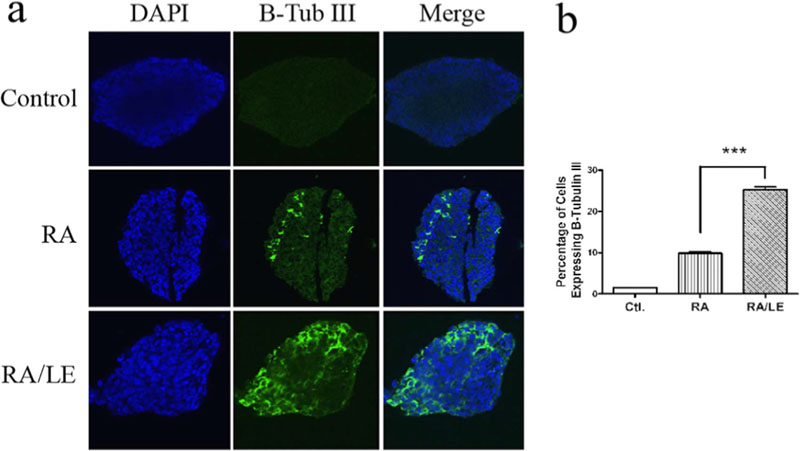R15 Recent findings
RARβ2-dependent signaling represses neuronal differentiation in mouse ES cells.
By Kona, S.L., Shrestha, A., Yi, X., Joseph, S., Barona, H.M., Martinez-Ceballos E. (2017).
Differentiation. Nov 10;98:55-61. doi: 10.1016/j.diff.2017.11.002. [Epub ahead of print]
Embryonic Stem (ES) cells are pluripotent cells that can be induced to differentiate into cells of all three lineages: mesoderm, endoderm, and ectoderm. In culture, ES cells can be differentiated into mature neurons by treatment with Retinoic Acid (RA) and this effect is mediated mainly through the activation of the RA nuclear receptors (RAR α, β, and γ), and their isoforms. However, little is known about the role played by specific RAR types on ES cell differentiation. Here, we found that treatment of ES cells with AC55649, an RARβ2 agonist, increased endodermal marker gene expression. On the other hand, we found that the inhibition of RARβ with 5μM LE135, together with RA treatment, increased the efficiency of mouse ES cell differentiation into neurons as compared to cells treated with RA only.

Effect of LE135 on ES neuronal differentiation in 3D cultures. EB (3D) cultures were treated with vehicle only, 5 μM RA, or 5 μM RA plus 5 μM LE (RA/LE). β-Tubulin III expression was examined by immunofluorescence. (a) Treatment of EBs with RA/LE was found to increase the expression of the neuronal marker as compared to treatment with RA only. Little or no β-Tubulin III expression was detected in control EBs. Representative sections are shown from triplicate experiments. (b) As it was the case for monolayer cultures, treatment of EBs with RA plus LE resulted in a an increase of the percentage of cells that express the neuronal market as compared to cells treated with RA only (about 2.5-fold). *** P ≤ 0.001.
Finally, we performed proteomic analyses on ES cells treated with RA vs RA plus AC55649 in order to identify the signaling pathways activated by the RARβ agonist. Our proteomic analyses using antibody microarrays indicated that proteins such as p38 and AKT were upregulated in cells treated with RA plus the agonist, as compared to cells treated with RA alone. Our results indicate that RARβ may function as a repressor of neuronal differentiation through the activation of major cell signaling pathways, and that the pharmacological inhibition of this nuclear receptor may constitute a novel method to increase the efficiency of ES to neuronal differentiation in culture.
